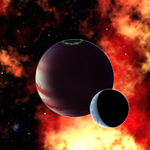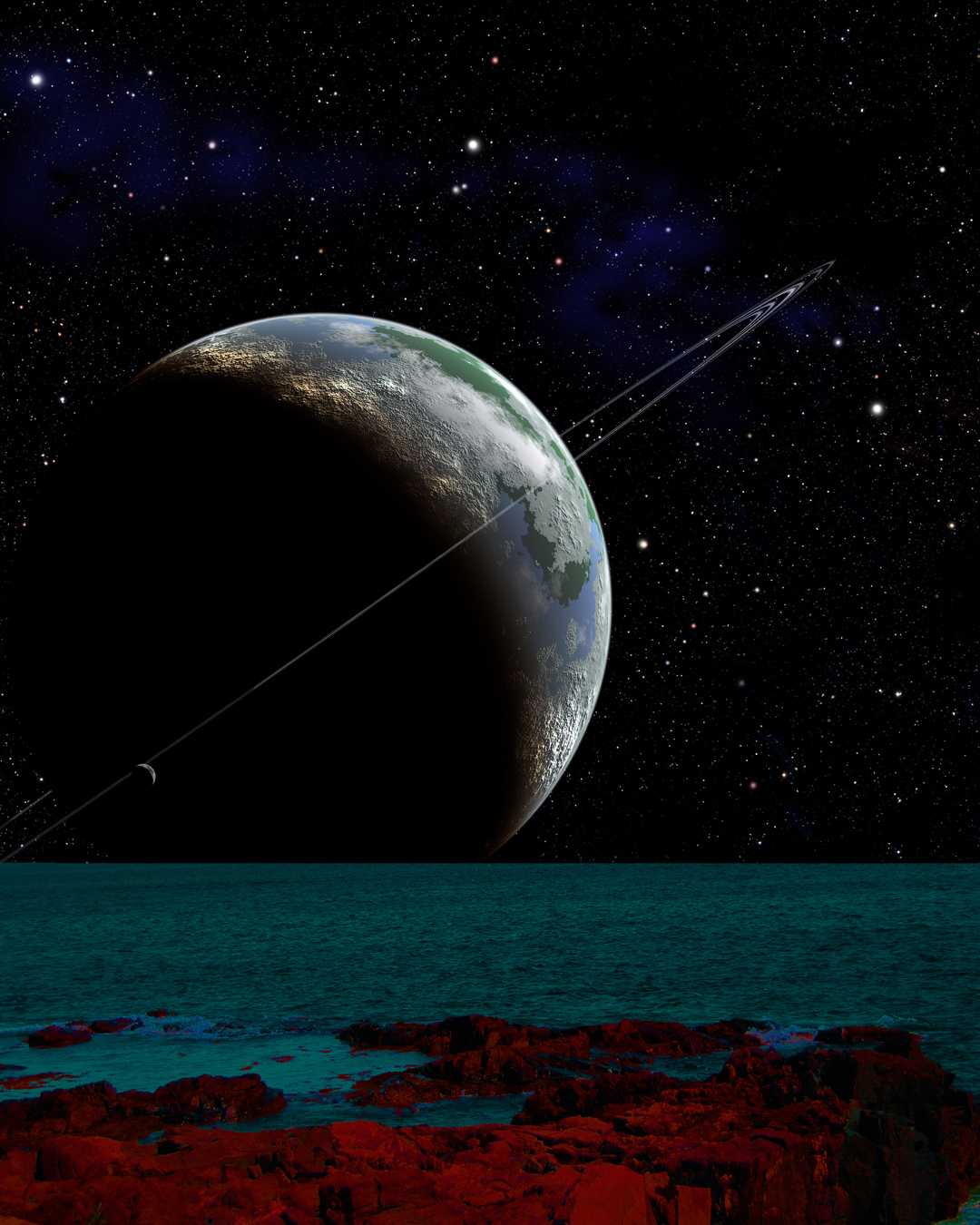Image List
-

-

This artist's conception shows a hypothetical gas giant planet with an Earth-like moon similar to the moon Pandora in the movie Avatar. New research shows that, if we find such an"exomoon" in the habitable zone of a nearby star, the James Webb Space Telescope will be able to study its atmosphere and detect key gases like carbon dioxide, oxygen, and water. The key is to find a planet that transits its star, and then find a moon orbiting that planet more than one stellar radius away, so that the moon can be studied independently of the planet. Moreover, an alien moon orbiting the gas giant planet of a red dwarf star may be more likely to be habitable than tidally locked Earth-sized planets or super-Earths.
David A. Aguilar, CfA -

This artist's conception shows a hypothetical ringed super-Earth as viewed from one of its moons. Both super-Earth and moon are habitable and contain liquid water.
David A. Aguilar, CfA